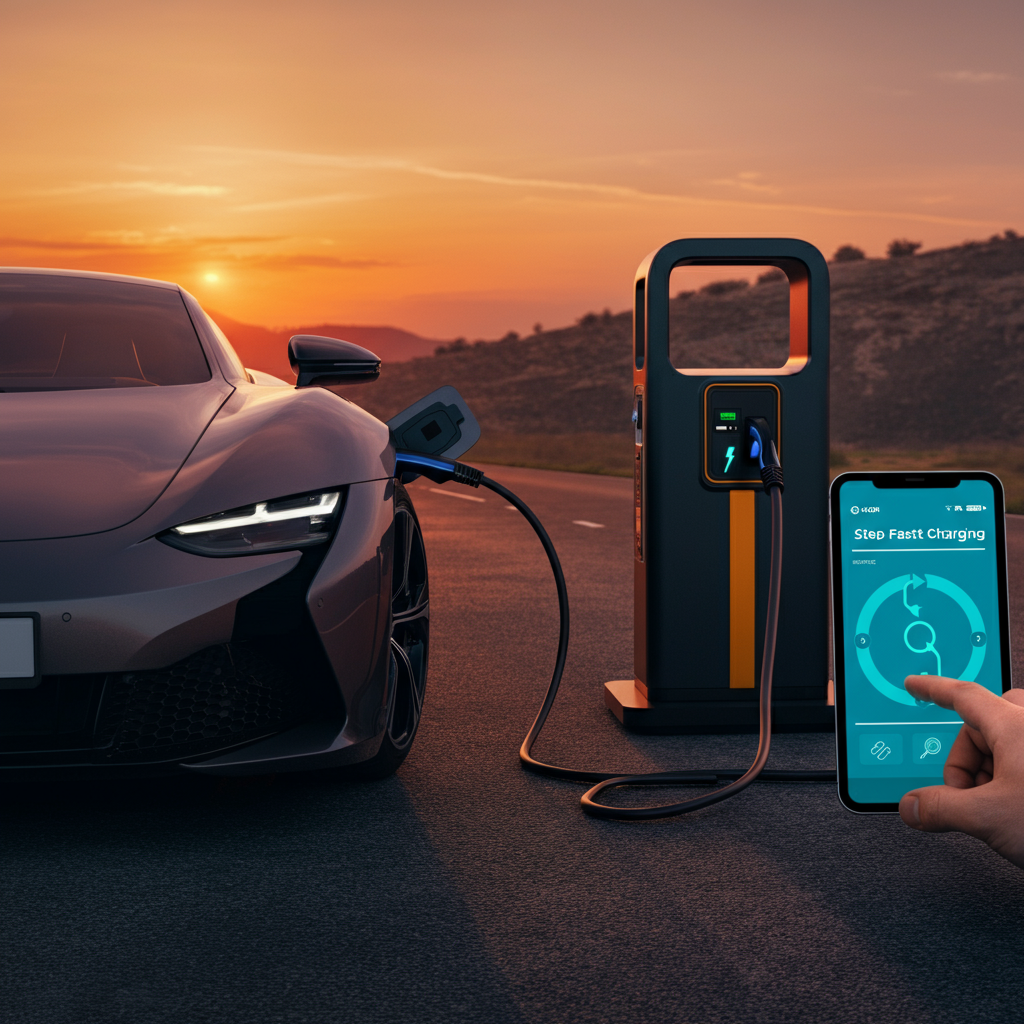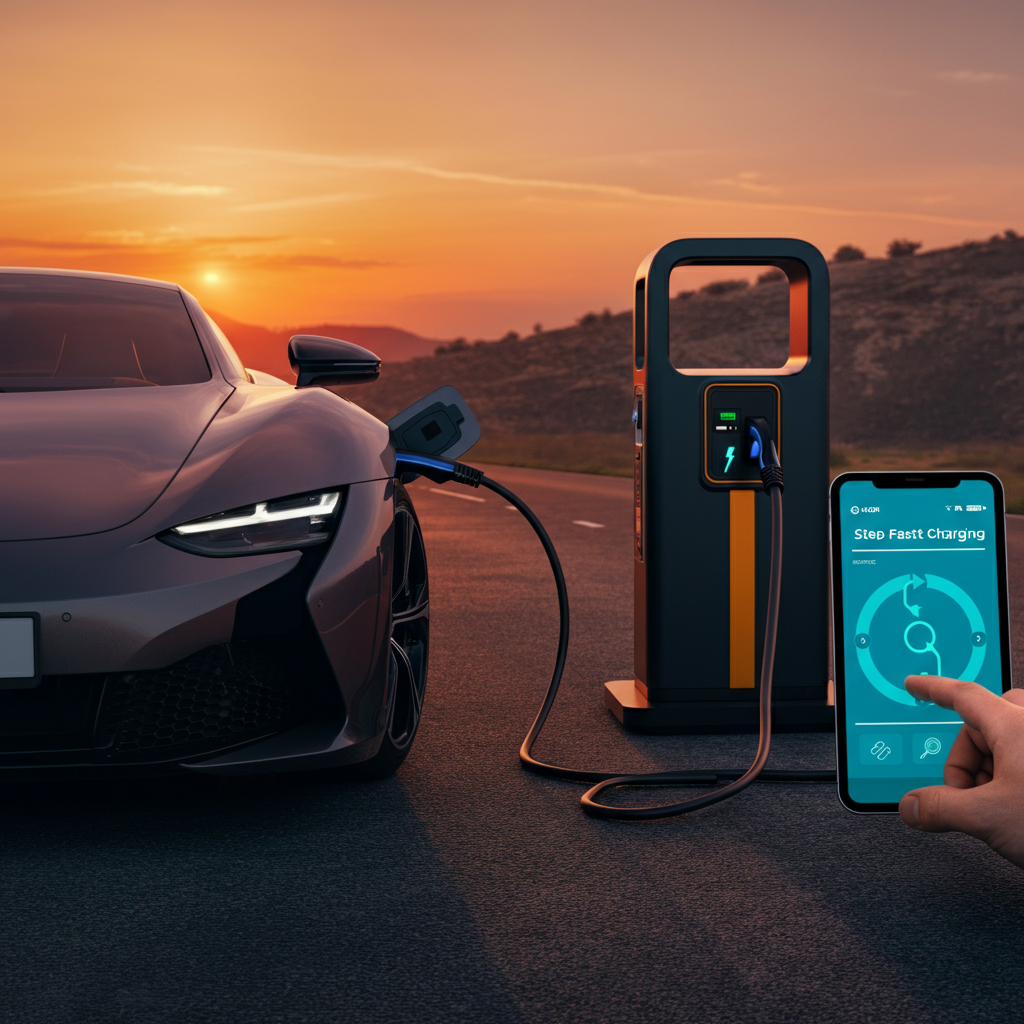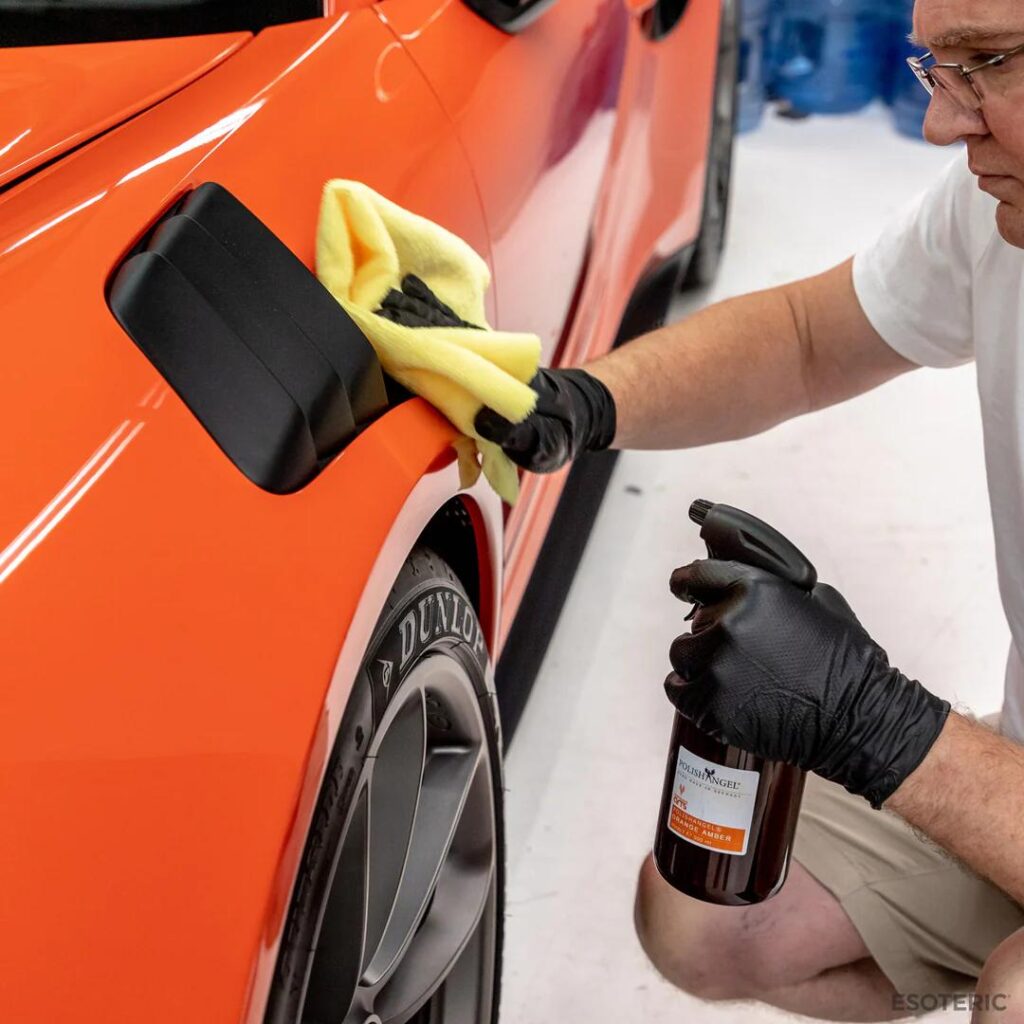As an Amazon Associate, I earn from qualifying purchases
Nothing ruins a day quite like turning your car key and hearing nothing but silence. A dead car battery can leave you stranded at the worst possible moment—before an important meeting, during a family emergency, or in the middle of nowhere with no help in sight.
Knowing how to charge your car battery quickly can transform a potential disaster into a minor inconvenience. Whether you’re dealing with a completely drained battery or one that’s simply running low, the right techniques and equipment can get you back on the road in minutes rather than hours.
Fast battery charging isn’t just about convenience. Understanding the proper methods helps preserve your battery’s lifespan while ensuring your safety during the process. From jump-starting techniques to selecting the right charging equipment, this guide will walk you through everything you need to know about charging your car battery efficiently.
The key lies in using the correct approach for your specific situation. Sometimes you need an immediate solution to get moving, while other times a slightly longer but gentler charging method will better serve your battery’s health. Let’s explore the most effective strategies for getting your battery charged quickly and safely.

Table of Contents
- 1 Why Charging Your Car Battery Fast is Important
- 2 How to Charge Your Car Battery Fast: Step-by-Step Guide
- 3 Best Charging Equipment for Fast Results
- 4 Common Mistakes to Avoid While Charging a Car Battery
- 5 Safety Tips When Charging a Car Battery Fast
- 6 Maximizing Your Battery’s Performance After Fast Charging
- 7 Frequently Asked Questions
- 8 Keep Your Battery Charged and Ready
Why Charging Your Car Battery Fast is Important
Time-sensitive situations make fast battery charging essential for many drivers. Medical emergencies, work deadlines, and family obligations don’t wait for a slow battery charge. Having the knowledge and tools to quickly restore power to your vehicle can mean the difference between making it to your destination and missing critical moments.
Emergency scenarios particularly highlight the importance of rapid charging techniques. If you’re stranded in an unsafe location or harsh weather conditions, getting your vehicle operational quickly becomes a matter of personal safety. Remote areas with limited cell service or help available make self-sufficiency even more crucial.
Battery health also benefits from proper fast-charging techniques. A battery that sits in a deeply discharged state for extended periods can suffer permanent damage through sulfation—a process where lead sulfate crystals build up on the battery plates. Quick charging helps prevent this deterioration by restoring the battery’s charge before long-term damage occurs.
Modern lifestyles demand reliability from our vehicles. Many people rely on their cars for daily commutes, business travel, and family responsibilities. A dead battery can cascade into missed appointments, lost income, and disrupted schedules. Fast charging skills provide the confidence to handle unexpected battery failures without major life disruptions.
How to Charge Your Car Battery Fast: Step-by-Step Guide
Jump-Starting Method
Jump-starting provides the fastest way to get your vehicle running again. Begin by positioning a working vehicle close enough to yours so the jumper cables can reach both batteries comfortably. Turn off both engines and engage the parking brakes.
Connect the positive (red) jumper cable clamp to the positive terminal of your dead battery. Attach the other red clamp to the positive terminal of the good battery. Connect one black clamp to the negative terminal of the working battery, then attach the final black clamp to an unpainted metal surface in your engine bay—not the negative terminal of the dead battery.
Start the working vehicle and let it run for 2-3 minutes. This allows the alternator to begin charging your dead battery. Attempt to start your vehicle. If it doesn’t start immediately, wait another 2-3 minutes before trying again. Once your car starts, remove the cables in reverse order: negative clamp from ground, negative from good battery, positive from good battery, positive from your battery.
Using a Fast Charger
Battery chargers designed for rapid charging can restore significant power to your battery within 15-30 minutes. Connect the charger’s positive lead to your battery’s positive terminal and the negative lead to the negative terminal. Ensure all connections are tight and secure.
Select the appropriate amperage setting on your charger. Most fast chargers offer settings between 10-40 amps. Higher amperage charges faster but generates more heat, which can damage your battery if used incorrectly. For emergency situations, 15-20 amps provides a good balance between speed and safety.
Monitor the charging process closely. Many modern chargers include automatic shut-off features, but older models require manual monitoring to prevent overcharging. Watch for excessive heat, swelling, or unusual odors from the battery—all signs to stop charging immediately.
Charging with Engine Running vs. Off
Charging your battery with the engine running can accelerate the process through the alternator’s contribution. However, this method requires careful attention to prevent electrical system damage. Start with jumper cables or a portable jump starter to get the engine running, then allow the alternator to continue charging while idling.
Charging with the engine off using a dedicated battery charger often provides more controlled results. This method allows precise amperage control and reduces the risk of voltage spikes that can damage sensitive electronic components. The process takes longer but offers better battery health preservation.
Best Charging Equipment for Fast Results
Portable Jump Starters
Modern portable jump starters have revolutionized emergency battery charging. These compact devices pack enough power to start most vehicles without requiring another car. Look for units with at least 400-600 peak amps for standard passenger vehicles, and 800+ amps for larger trucks or SUVs.
Quality portable jump starters include safety features like reverse polarity protection, overcharge protection, and spark-proof technology. Many models also incorporate USB ports for charging phones and LED flashlights for nighttime emergencies. Brands like NOCO, TACKLIFE, and Clore Automotive offer reliable options across various price ranges.
Battery capacity, measured in amp-hours (Ah), determines how many jumps you can perform before recharging the unit. Higher capacity units provide more jumps but increase size and weight. Consider your typical usage patterns when selecting capacity—frequent travelers benefit from higher capacity units despite the added bulk.
Fast-Charging Car Battery Chargers
Smart battery chargers with fast-charging capabilities offer the best combination of speed and battery health protection. These chargers automatically adjust amperage based on battery condition, temperature, and charge level. Microprocessor-controlled units like those from Schumacher, BLACK+DECKER, and Battery Tender provide professional-grade charging in consumer-friendly packages.
Look for chargers with multiple amperage settings, allowing you to choose between fast charging for emergencies and slower charging for routine maintenance. Models with 6, 12, and 24-volt compatibility handle various vehicle types, from motorcycles to large trucks.
Advanced features like battery reconditioning modes can restore deeply discharged or sulfated batteries that standard chargers cannot help. These modes use specialized charging algorithms to break down sulfate crystals and restore battery capacity.
Trickle Chargers for Maintenance
While not the fastest option, trickle chargers excel at maintaining battery health during extended storage periods. These low-amperage chargers (typically 1-2 amps) provide gentle, continuous charging that prevents battery degradation without risk of overcharging.
Smart trickle chargers automatically switch to maintenance mode once the battery reaches full charge. This float charging maintains optimal battery voltage without the continuous cycling that can reduce battery life. They’re particularly valuable for seasonal vehicles, boats, or backup cars that sit unused for weeks or months.
Common Mistakes to Avoid While Charging a Car Battery
Incorrect Cable Connections
Reversing positive and negative connections represents one of the most dangerous charging mistakes. This error can cause sparks, battery explosion, or damage to your vehicle’s electrical system. Always double-check connections before applying power, and remember: positive to positive, negative to ground (when jump-starting) or negative to negative (when using a charger).
Loose connections create resistance, generating heat and reducing charging efficiency. Ensure all clamps make solid contact with clean battery terminals. Corroded terminals prevent proper electrical contact—clean them with a wire brush or battery terminal cleaner before charging.
Overcharging Risks
Excessive charging time or amperage can permanently damage your battery through overheating and electrolyte loss. Modern sealed batteries are particularly susceptible to overcharging damage since they cannot be refilled with water. Monitor charging progress and stop when the battery reaches full charge.
Automatic chargers with built-in overcharge protection eliminate much of this risk, but manual chargers require constant attention. Signs of overcharging include excessive heat, swelling, or electrolyte leakage. If you notice any of these symptoms, disconnect the charger immediately.
Ignoring Battery Age and Condition
Attempting to fast-charge a battery that’s reached the end of its useful life often proves futile and potentially dangerous. Batteries older than 4-5 years may not hold a charge effectively, regardless of charging speed or technique. Swollen, cracked, or heavily corroded batteries should be replaced rather than charged.
Test battery voltage with a multimeter before charging. A healthy 12-volt battery should read approximately 12.6 volts when fully charged and at rest. Readings below 12.0 volts indicate deep discharge, while readings that don’t increase during charging suggest internal battery failure.
Safety Tips When Charging a Car Battery Fast
Personal Protection
Car batteries contain sulfuric acid and produce hydrogen gas during charging—both potential safety hazards. Wear safety glasses to protect your eyes from acid splashes, and use rubber gloves when handling batteries and cables. Long sleeves and pants provide additional protection from accidental contact with corrosive materials.
Remove jewelry, especially rings and watches, before working with batteries. Metal jewelry can create electrical shortcuts if it contacts battery terminals, potentially causing severe burns. Tie back long hair and avoid loose clothing that might catch on equipment or drape near battery terminals.
Proper Ventilation Requirements
Hydrogen gas released during charging is highly flammable and can accumulate in enclosed spaces. Always charge batteries in well-ventilated areas—preferably outdoors or in open garages. Never charge a battery in a closed garage, basement, or other confined space without adequate air circulation.
Avoid smoking, open flames, or sparking tools near charging batteries. Even small sparks from touching cables together can ignite hydrogen gas, causing explosions. Turn off cell phones near charging batteries, as some older devices could theoretically create sparks, though this risk is minimal with modern equipment.
Equipment Inspection
Examine jumper cables and battery chargers before each use. Look for cracked insulation, loose connections, or damaged clamps. Faulty equipment can cause electrical shorts, sparks, or inadequate charging. Replace damaged equipment immediately rather than attempting repairs.
Check battery condition before charging. Cracked battery cases, loose terminals, or visible electrolyte leaks indicate batteries that should not be charged. These conditions present safety risks and suggest the battery needs replacement rather than charging.
Maximizing Your Battery’s Performance After Fast Charging
Fast charging gets you back on the road quickly, but follow-up care ensures your battery maintains optimal performance. Drive your vehicle for at least 30 minutes after jump-starting to allow the alternator to fully recharge the battery. Short trips may not provide sufficient charging time, leaving you vulnerable to another dead battery incident.
Consider the underlying cause of your battery discharge. Extreme temperatures, parasitic electrical draws, or an aging battery may require attention beyond emergency charging. Address these root causes to prevent recurring problems and extend battery life.
Regular battery maintenance prevents many emergency charging situations. Clean terminals monthly, check electrolyte levels in serviceable batteries, and test battery voltage periodically. Proactive care is more convenient and cost-effective than repeated emergency charging.
Frequently Asked Questions
Can I charge my car battery too quickly?
Yes, charging too quickly can damage your battery through excessive heat generation and electrolyte loss. Most standard car batteries shouldn’t be charged at more than 10-20% of their amp-hour capacity. For a typical 60 Ah battery, this means staying below 6-12 amps for routine charging, though higher rates are acceptable for emergency situations.
How long does it take to fully charge a car battery?
Charging time depends on battery size, discharge level, and charging amperage. A completely dead standard car battery typically requires 4-6 hours with a 10-amp charger, or 10-12 hours with a 2-amp trickle charger. Fast chargers at 20+ amps can restore enough power to start your car in 15-30 minutes, though full charging still requires more time.
Can a fast charge damage the car battery?
Occasional fast charging won’t harm a healthy battery, but repeated rapid charging can reduce battery life through increased heat and stress. Modern batteries handle fast charging better than older designs, but gentler charging methods when time allows will maximize battery longevity.
Is it safe to use a portable jump starter to charge my car battery?
Portable jump starters are generally safe when used correctly and can provide emergency power without risking damage to either vehicle’s electrical system. Follow manufacturer instructions carefully, ensure proper polarity, and allow the jump starter to rest between uses if multiple attempts are needed.
How can I tell if my car battery needs charging?
Signs of a battery needing charging include slow engine cranking, dim headlights, dashboard warning lights, or complete failure to start. A multimeter reading below 12.4 volts indicates a battery that needs charging, while readings below 12.0 volts suggest deep discharge requiring immediate attention.
Keep Your Battery Charged and Ready
Mastering fast battery charging techniques transforms a stressful breakdown into a manageable inconvenience. The combination of proper knowledge, quality equipment, and safety awareness ensures you can handle battery emergencies confidently and effectively.
Remember that fast charging serves as an excellent emergency solution, but regular battery maintenance prevents most charging situations from arising. Invest in a quality battery charger or portable jump starter, learn the proper techniques, and keep your equipment easily accessible.
Your preparedness today determines whether tomorrow’s dead battery becomes a minor delay or a major disruption. Take the time to practice these techniques and organize your charging equipment—you’ll appreciate the investment the first time you need it.

As an Amazon Associate, I earn from qualifying purchases


